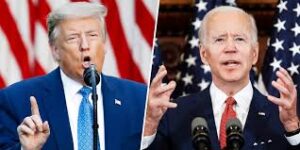Economic policies will be especially important as the country seeks to continue its recovery from the lockdown. Millions of Americans lost their jobs, and thousands of businesses either closed for good or severely downsized to remain in business.
Businesses and unemployed workers both need help. But pro-growth policies and pro-worker policies are often at odds with each other. For example, Joe Biden favors a $15 federal minimum wage, indexed to the median hourly wage so that the minimum wage would continue to increase.
While an increase in the minimum wage would lift some families out of poverty, it would also result in job loss for many, fewer hours for some workers and the closure of some businesses. When Seattle adopted a $15 an hour minimum wage a few years ago, for example, workers who were affected were given fewer hours and experienced a net loss in pay.
A Congressional analysis found that a $15 federal minimum wage could lift 1.3 million households out of poverty, while boosting pay for 27 million workers, but it would also result in the loss of 1.3 million jobs.
Biden and the Democratic Party also favor spending another $3 trillion to fight COVID-19 and help the economy recover, on top of the more than $4 trillion already spent. Republicans favor spending another $1 trillion. President Trump proposed a compromise of $1.8 trillion in new spending and Democrats proposed a $2.2 trillion bill.
But the Democratic bill included little to address the pandemic or economic recovery. For example, it included $417 billion for state and local governments, which many consider to be a bailout for governors that have overspent. It also included $225 billion for school districts, but only $5 billion is pandemic-related.
President Trump’s stated goals are to create 10 million new jobs in 10 months and to create one million new businesses, but the specifics for achieving those goals are vague. Besides additional tax cuts, he has proposed “Made in America” tax credits, expansion of opportunity zones and expensing benefits for returning certain jobs from other countries to the U.S.
